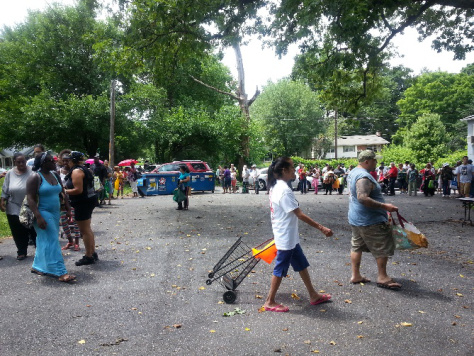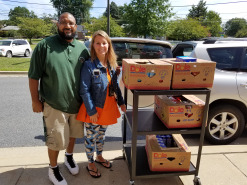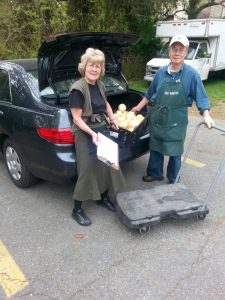UNSUNG HEROES: FOOD ASSISTANCE PROVIDERS, PART 1

Part 1
Who are the unsung heroes in our community that receive and redistribute recovered food to those who experience hunger? Where do people experiencing hunger go to get a free hot meal, supplemental groceries to stretch their limited budget, or a turkey and trimmings to make their holidays a bit brighter? Unless they work with a social service agency or charitable organization, most people that I talk with have no idea that hunger exists in Montgomery County, especially because we live in one of the wealthiest counties in the country. The statistics are startling: 71,000 residents in Montgomery County are food insecure, 1 in 3 Montgomery County Public School students qualify for free or reduced meals at school, and 8,060 county seniors live below the poverty line.

People experiencing hunger (71,000 residents in Montgomery County) rely on food assistance organizations such as CFR partner New Creation Church to receive supplemental food.
This summer, I visited with many of the 29 Community Food Rescue (CFR) network’s food assistance organizations to see their operations, learn about the people they serve, and help them get the most out of CFR’s resources.
Food recipient organizations range in capacity to help their neighbors: from a literal closet of canned goods provided as needed, to freshly-cooked meals, to a full array of groceries including local fresh produce, meat, dairy, and packaged goods. No one has a complete picture of all those who help with supplemental food, but the Montgomery County Food Council is making a great start. They are creating an online and print directory to help social service providers and individuals in need find these food resources. So far they’ve heard from 61 food providers in the county.
While no one chooses to be in need of supplemental food, people who receive food are grateful that these houses of worship, schools, non-profit organizations, and county facilities are here to serve. On the small end of the food distribution spectrum, I visited with CFR member Glen Haven Elementary School in Wheaton.  Their student population gets free breakfast but doesn’t qualify for government-funded free and reduced-cost lunches.
Their student population gets free breakfast but doesn’t qualify for government-funded free and reduced-cost lunches.  Some families struggle to buy enough food for their families. Rebecca Wills, the school counselor explains, “We stock a closet with canned and packaged food (and clothing) and parents can request to visit the pantry. Receiving CFR’s shelf stable food really helps our community.”
Some families struggle to buy enough food for their families. Rebecca Wills, the school counselor explains, “We stock a closet with canned and packaged food (and clothing) and parents can request to visit the pantry. Receiving CFR’s shelf stable food really helps our community.”
Among CFR network’s recipient organizations are houses of worship and non-profit organizations affiliated with them to serve the community. Some are staffed solely by hard-working, long-standing volunteers, like Joyce Seamens, director of the Adventist Community Services of Greater Washington (ACSGW) food and clothing program, which serves 90 people a day.

Joyce Seamens of Adventist Community Services of Greater Washington receives rescued fresh onions for their clients.
Joyce reminds me that anyone can be in need of supplemental food. Just last August, many families lost their homes in a violent explosion and fire just before midnight in Silver Spring, Maryland. Officials later determined that a gas leak led to the explosion, which injured 34 people and killed seven. “People, many who were securely asleep in bed, fled their apartment with only the clothes they were wearing. They were never permitted back in the buildings, which were unstable and condemned.” explained Joyce. ACSGW sought donations from the community to assist the families. “Community Food Rescue provided much needed food to help the families as they work to rebuild their lives,” said Joyce.
Food assistance organizations are on the “front lines” of helping people who are food insecure. Sharing their work and stories helps us all understand the vital role that rescued food plays in peoples’ lives. If you know of a non-profit food assistance organization that can use rescued food to stretch their budget, refer them to CFR. They can also be added to the Food Assistance Directory, so that people in need of food assistance can find them.

